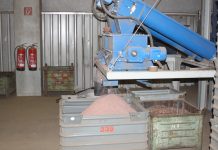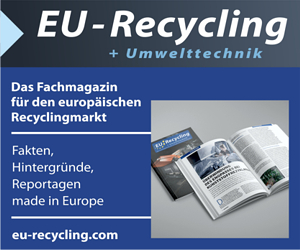The International Copper Study Group (ICSG) released preliminary data for October 2018 world copper supply and demand in its January 2019 Copper Bulletin.
The Bulletin and ICSG online statistical database provide detailed data, on a country basis, for copper mine, smelter, refined and semis production and copper refined usage, trade, stocks and prices. The bulletin is available for sale (single issues €100/€150, annual subscription €500/€750 for orders originating from/outside institutions based in ICSG member countries).
World mine production is estimated to have increased by about 2.4% in the first ten months of 2018, with concentrate production rising by 2.3% and solvent extraction-electrowinning (SX-EW) by 2.6%:
- The increase in world mine production of about 390,000 t copper was principally due to constrained output in 2017 (mainly in Chile, Indonesia and the DRC).
- Production in Chile, the world’s biggest copper mine producing country, increased by 6% primarily because production in February/March 2017 was restricted by a strike at Escondida (the world’s biggest copper mine).
- Indonesian output increased by 19% due to the fact that comparative output in 2017 was negatively affected by a temporary ban on concentrate exports that started in January and ended in April.
- SX-EW production in the Democratic Republic of Congo (DRC) increased by 12% and Zambian mine output increased by 8% as a result of the restart of temporarily closed capacity in both countries.
- Although no major supply disruptions occurred in the first ten months of this year, overall growth was partially offset by lower output in Canada (-11%) and the United States (-3.5%).
- After a strong increase over the last few years due to new and expanded capacity, output in Peru (the world’s second largest copper mine producing country) stabilized.
- On a regional basis, mine production is estimated to have increased by around 8% in Africa, 3.5% in Latin America, 2% in Asia and 10% in Oceania but declined by 5% in North America and remained essentially unchanged in Europe.
World refined production is estimated to have increased by 1.2% in the first ten months of 2018 with primary production (electrolytic and electrowinning) remaining essentially unchanged and secondary production (from scrap) increasing by 5%:
- World growth was constrained by an unusually high frequency of smelter disruptions and temporary shutdowns for technical upgrades/modernizations.
- The main contributor to the growth in world refined production was China due to its continued expansion of capacity.
- A rise of 2% in Chile was a consequence of a recovery from 2017 when output was negatively impacted by a series of smelter maintenance shutdowns. However, despite this increase, Chilean output over the first ten months of 2018 was 6% lower than the same period of 2016.
- Production in Indonesia and Japan was also higher in the first ten months of 2018, recovering from reduced output in 2017.
- Increases in electrowinning (SX-EW) output in the DRC and Zambia also contributed to world refined production growth.
- Overall growth was partially offset by a 34% decline in India’s output due to the shutdown of Vedanta’s Tuticorin smelter in April and declines in Australia, the Philippines, Poland, and the United States as a consequence of maintenance shutdowns and operational issues.
- On a regional basis, refined output is estimated to have increased in Africa (10%), Asia (1%) and Latin America (2%) whilst remaining essentially unchanged in Europe and Oceania and declining in North America (-4%).
World apparent refined usage is estimated to have increased by about 2.8% in the first ten months of 2018:
- Chinese apparent usage grew by 7% driven by a 25% increase in net refined copper imports. It is possible this development was influenced by a tightness in the availability of scrap in China.
- Among other major copper users, demand increased in India, Japan, the United States and the EU but declined in Taiwan (China) and South Korea.
- Preliminary data indicates that world ex-China usage declined by 0.5%.
World refined copper balance for the first ten months of 2018 (including above referred usage upward revisions) indicates a deficit of about 545,000 t:
- In developing its global market balance, ICSG uses an apparent demand calculation for China that does not take into account changes in unreported stocks [State Reserve Bureau (SRB), producer, consumer, merchant/trader, bonded]. To facilitate global market analysis, however, an additional line item—Refined World Balance Adjusted for Chinese Bonded Stock Changes—is included in the attached table that adjusts the world refined copper balance based on an average estimate of changes in unreported inventories provided by three consultants with expertise in China’s copper market.
- Lower growth in world refined production, as explained above, was one of the main factors that resulted in an apparent deficit of about 545,000 t in the first ten months of 2018.
- After adjusting the world refined copper balance for changes in Chinese bonded stocks the market deficit was around 625,000 t.
Copper Prices and Stocks
Based on the average of stock estimates provided by independent consultants, China’s bonded stocks are thought to have declined by 80,000 t over the first ten months of 2018 compared to the year-end 2017 level. Bonded stocks increased by around 20,000 t over the same period of 2017. As of the end of December, copper stocks held at the major metal exchanges (LME, COMEX, SHFE) totalled 350,729 t, a decline of 191,800 t (-35%) from stocks held at the end of December 2017. Stocks were down at the LME (-34%), SHFE (-21%) and COMEX (-48%). The average LME cash price for October was US$ 6,094.21 /t, down 1.6% from the November average of US$ 6,193.00 /t. The 2018 high and low copper prices were US$7,262.50 per tonne (on 8th Jun) and US$5,823 per tonne (on 5th Sep), respectively, and the year average was US$6,523.01/t per tonne (5.8% above the 2017 annual average).
Please visit the ICSG website for further copper market related information.
Source: International Copper Study Group (ICSG)







